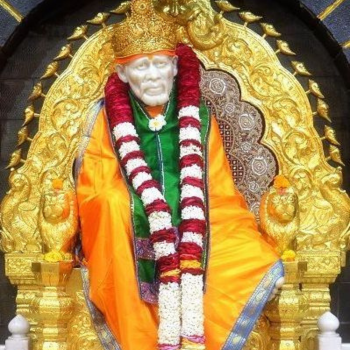Shirdi Sai Baba Devasthan – A Divine Journey to Faith and Peace

Nestled in the heart of Maharashtra, the holy town of Shirdi is home to one of India’s most revered spiritual sites — the Shirdi Sai Baba Devasthan. Every year, millions of devotees from all corners of the world flock to this sacred place to seek blessings, guidance, and inner peace from Sai Baba, the saint revered for his teachings of love, compassion, and unity.
Who Was Sai Baba of Shirdi?
Sai Baba, also known as Shirdi Sai Baba, was a saint, fakir, and spiritual master who lived in Shirdi during the late 19th and early 20th centuries. Though little is known about his birth and early life, his teachings transcended religions, emphasizing Shraddha (Faith) and Saburi (Patience).
He lived a simple life, helped the poor, healed the sick, and brought people of all faiths together under the universal truth of love and service. For his devotees, Sai Baba was — and remains — a living embodiment of divine power and mercy.
The Sacred Shirdi Sai Baba Temple (Devasthan)
1. The Samadhi Mandir
At the heart of the Shirdi Sai Baba Devasthan lies the Samadhi Mandir, the resting place of Baba’s physical form. The temple is beautifully constructed in white marble with Baba’s life-size idol seated in a blessing posture. The atmosphere within is charged with spiritual energy, drawing devotees into deep prayer and reflection.
2. Daily Rituals & Aartis
The temple follows a daily schedule of rituals and aartis (devotional songs), including:
- Kakad Aarti (early morning)
- Madhyan Aarti (afternoon)
- Dhoop Aarti (evening)
- Shej Aarti (night)
Each aarti is performed with devotion and attended by thousands of devotees who join in singing and chanting Baba’s name.
3. Dwarkamai
Adjacent to the main temple is Dwarkamai, a sacred mosque where Baba spent most of his life. It houses the sacred dhuni (eternal flame), a stone where Baba used to sit, and various items used by him. Devotees believe that offering prayers here brings peace and healing.
4. Gurusthan
This is the place where Baba was first seen meditating under a neem tree as a young man. It is believed that lighting incense sticks here fulfills the wishes of devotees.
5. Chavadi and Other Sites
- Chavadi is where Baba used to sleep on alternate nights.
- Lendi Baug is the garden Baba personally cared for.
- Khandoba Temple, where he was first greeted by the priest when he came to Shirdi.
Spiritual Significance
Shirdi is more than just a temple town; it’s a living experience of faith. Devotees often share miraculous stories of how Baba answered their prayers, cured ailments, or provided clarity during difficult times. For many, visiting Shirdi is a spiritual rebirth — a reminder of the strength that comes from patience, devotion, and surrender.
Facilities for Devotees
The Shri Saibaba Sansthan Trust manages the temple with excellent facilities:
- Accommodation and food (Prasadalaya)
- Donation counters and online booking
- Clean and well-managed premises
- Darshan passes and queue systems for crowd management
- Live streaming of Aartis
How to Reach Shirdi
- By Air: Shirdi Airport (14 km from the temple)
- By Train: Sainagar Shirdi Railway Station
- By Road: Well-connected from Mumbai, Pune, Nashik, and other cities
Conclusion
A visit to Shirdi Sai Baba Devasthan is not just a pilgrimage, but a journey inward — toward faith, humility, and self-realization. Baba’s words, “Why fear when I am here”, continue to echo in the hearts of millions.
Whether you’re a lifelong devotee or a first-time visitor, Shirdi will leave you with a sense of peace that stays long after you’ve returned.
Om Sai Ram 🙏
